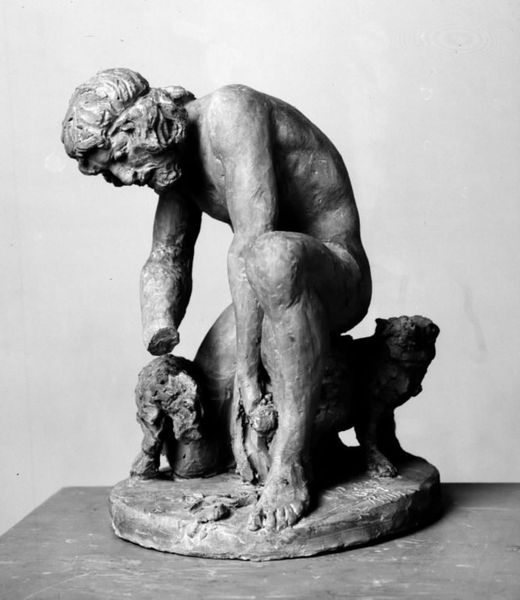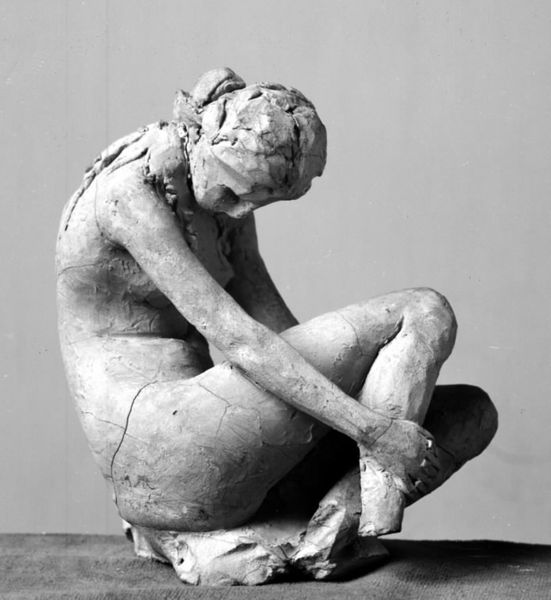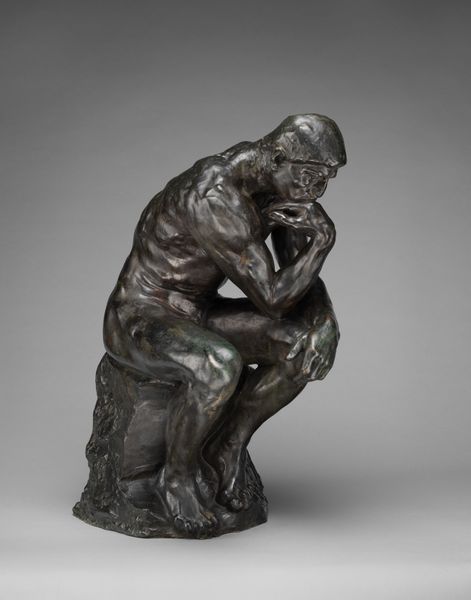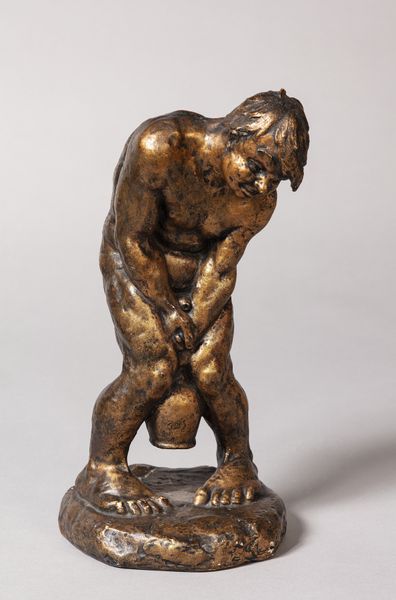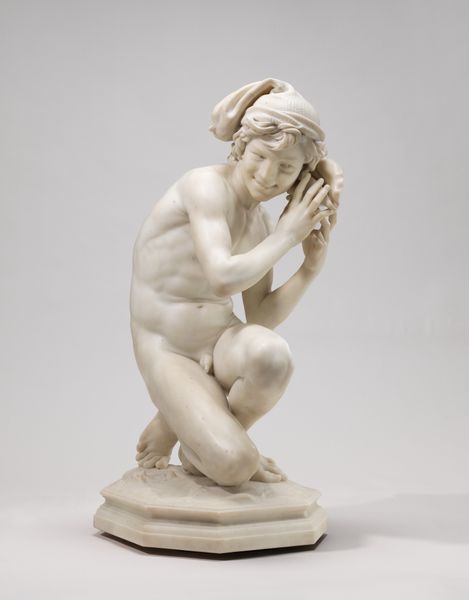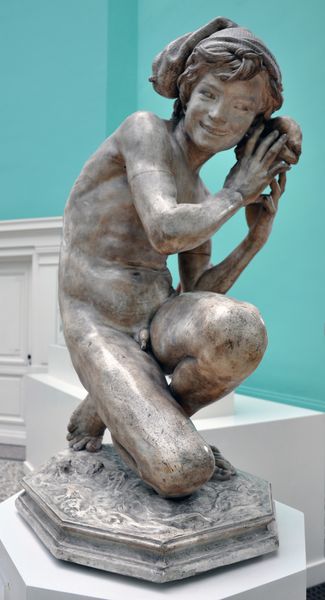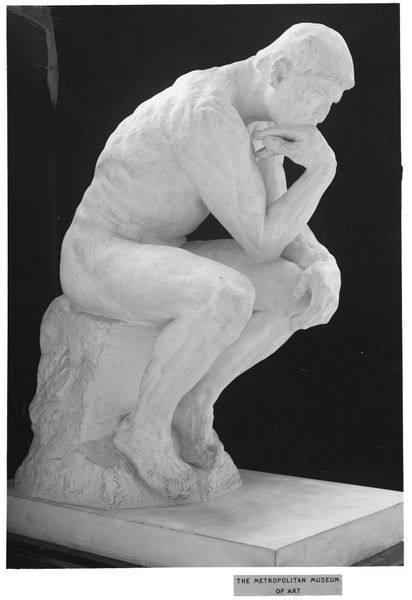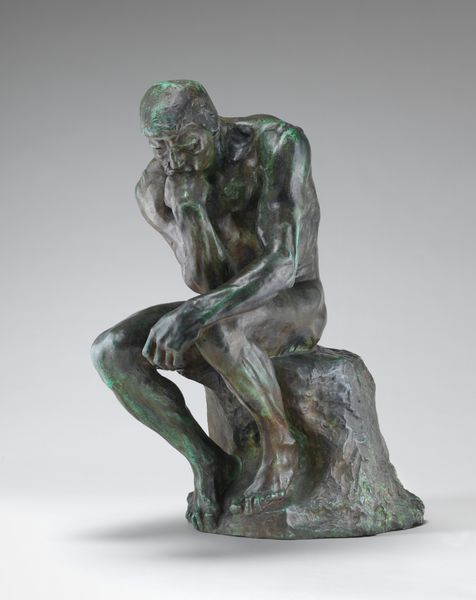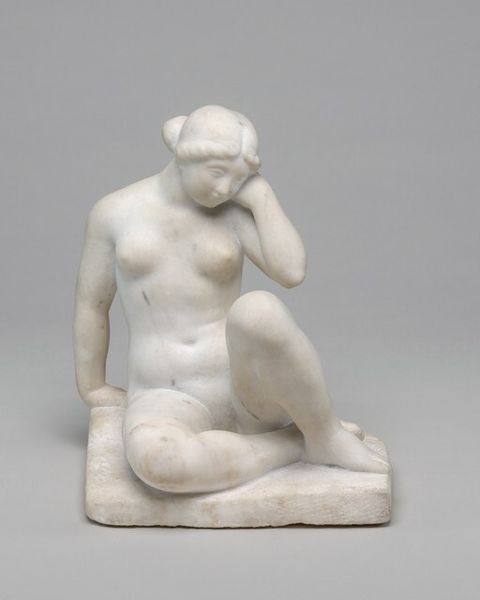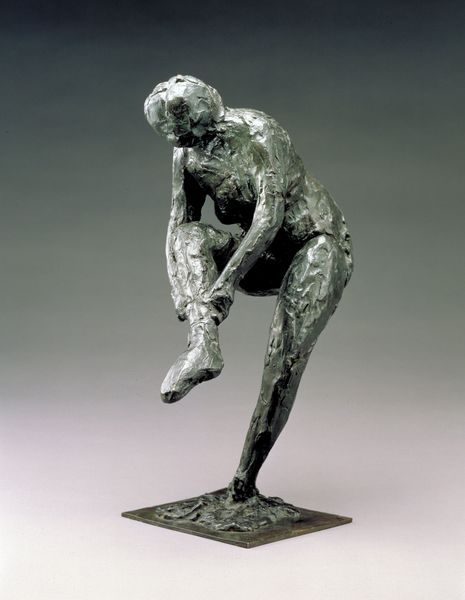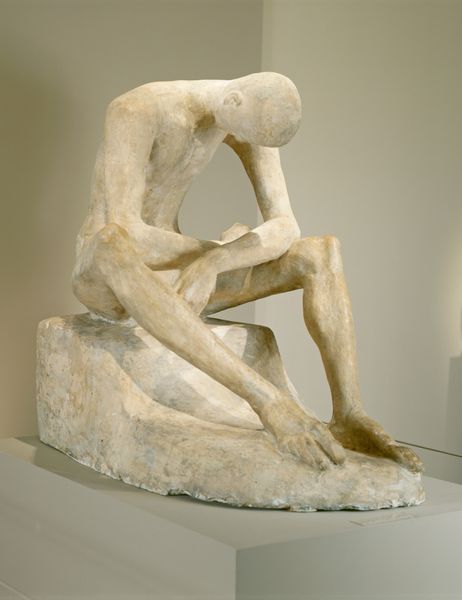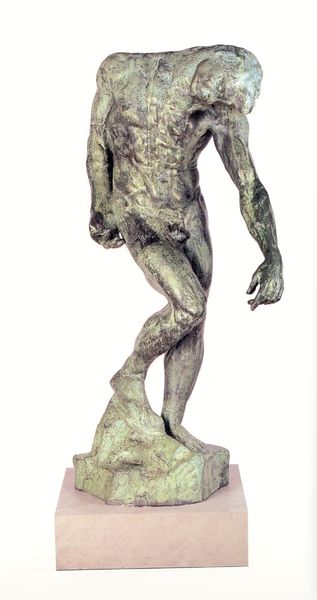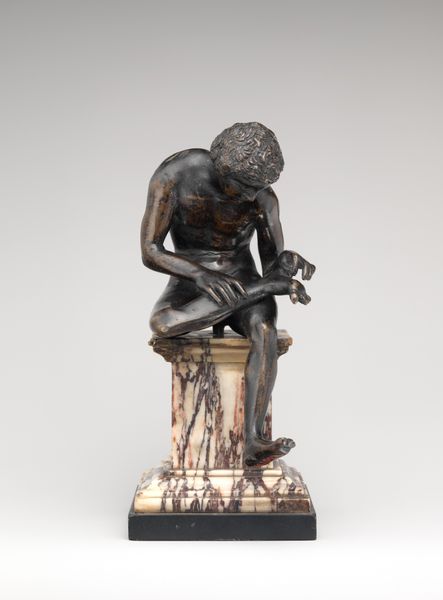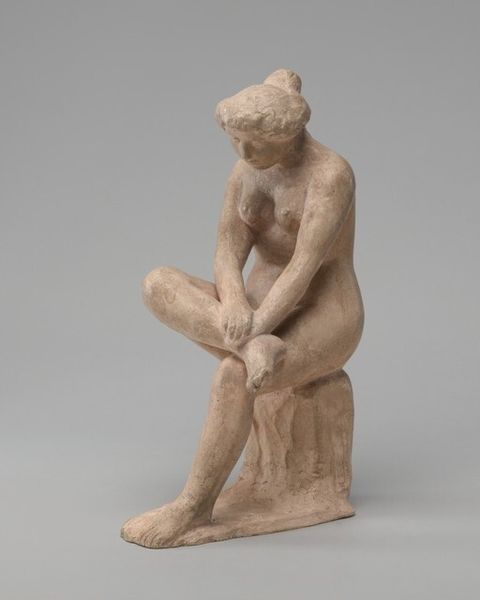
sculpture, marble
#
portrait
#
statue
#
stone
#
sculpture
#
figuration
#
sculpture
#
marble
#
italian-renaissance
#
nude
#
statue
Copyright: Public domain
Curator: Here we see Michelangelo’s “Crouching Boy,” a marble sculpture currently housed in the Hermitage Museum, dating back to 1533. What are your initial impressions? Editor: It strikes me as an ode to introspection, or perhaps a quiet surrender. The figure is so compact, curled in upon himself. It evokes a feeling of immense weariness, the weight of the world translated into the curvature of his spine. Curator: It's interesting to consider the socioeconomic factors present during its creation. Michelangelo, patronized by wealthy families and the church, transformed raw marble—extracted by laborers—into works of immense value. What does it mean to portray the nude human form, considering the hierarchies involved? Editor: I see him less as a symbol of high societal structure, and more like all of us stripped bare – a poignant commentary on vulnerability. Think about the physical effort required to manifest it: the rough extraction, the chisel against resistant stone. I’ll wager it carries an echo of those physical processes. Curator: Yes, the physicality inherent in the making process speaks volumes. There are considerations surrounding the Italian Renaissance workshops: the apprenticeships, the studio assistants. Who truly shaped each curve and plane of that marble? Authorship gets rather complex. Editor: That might very well be. Though in my experience, the most profound artworks often retain the essence, the core idea, planted by the "author," Michelangelo, in this instance. Its emotive capability seems almost to transcend its means of production. It has an uncanny immediacy. It's something quite beyond craft alone. Curator: Certainly, the artistic intention holds power, although the context informs how that intention manifests and is perceived through the lens of class. Editor: In the end, both aspects blend, informing and enriching our viewing experience of the work. Craft and idea can exist together and be beautiful. Curator: A fitting reminder to consider the intersection between production and emotional resonance in our understanding of the sculpture. Editor: Yes. It urges me to slow down. Pause a moment. Take the form. Its textures, and the context. Then, reflect. Thank you.
Comments
No comments
Be the first to comment and join the conversation on the ultimate creative platform.
